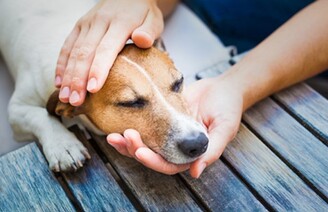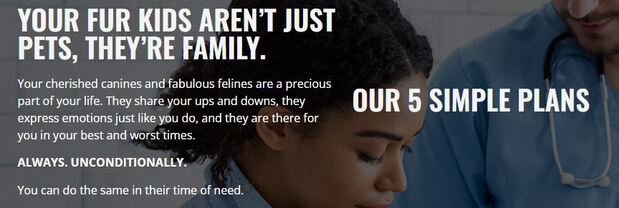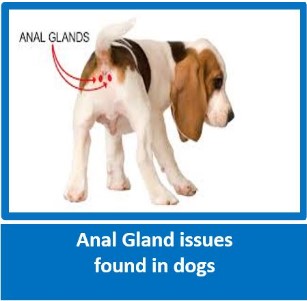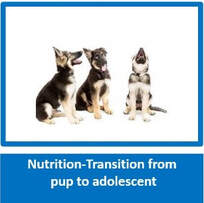Giving Your Dog a Thorough Home Check-up
(By Krista Williams, BSc, DVM, CCRP; Lynn Buzhardt, DVM. VCA Animal Hospitals-Founded in 1986, VCA is a family of hometown animal hospitals committed to making a positive impact for pets, people, and our communities- Veterinarians & Emergency Vets (vcahospitals.com)

“An ounce of prevention is worth a pound of cure.” Dogs, like people, need routine medical exams to stay healthy. Since dogs age more rapidly than people, they need well-health check-ups not once, but twice a year. So, they really need “two ounces” of prevention.
To really stay on top of things, you can give your dog a quick and easy home exam between scheduled veterinary visits. It is best to perform the exam when your dog is relaxed, so catching him right before an afternoon nap may be just the ticket.
Do your exam in a quiet area of the house free of distractions that might make your dog jittery.
Here is how to perform an at-home physical exam on your dog, from nose to tail:
Gaze into those loving eyes.
Be nosy
Give him a hug
Give your dog a massage
Have a heart
Take in the whole picture
Picking up on problems quickly makes them easier to remedy. And you know your dog better than anyone, so you will recognize any changes in his physical status right away. If “an ounce
of prevention is worth a pound of cure”, you will make a good investment by examining your dog.
To really stay on top of things, you can give your dog a quick and easy home exam between scheduled veterinary visits. It is best to perform the exam when your dog is relaxed, so catching him right before an afternoon nap may be just the ticket.
Do your exam in a quiet area of the house free of distractions that might make your dog jittery.
Here is how to perform an at-home physical exam on your dog, from nose to tail:
Gaze into those loving eyes.
- The whites (sclera) of the eyes should be white, not yellow or bloodshot. The cornea should be clear, not cloudy. The pupils should be the same size in both eyes.
- The eyes should be moist, but there should be no discharge or gunk present. Your dog should blink easily without squinting. There should be no swellings on the eyelids. The lid margins should be straight, not curling in or out.
Be nosy
- Look at your dog’s nose and answer these questions. Is it running? Is it dry or cracking?
- Are the nostrils crusty? Are there sores present? Any ‘yes’ answers indicate trouble.
- Is it the normal colour? (Hint: Most noses are black).
- Look at the ear flaps and note any abrasions or sores.
- Look down the ear canal for redness, waxy debris, or drainage. You will not be able to see very far, but sometimes problems are readily apparent with a quick glance.
- If your dog’s ears smell funny, they may be infected by bacteria or yeast, or infested by ear mites.
- Retract your dog’s lips into a smile and look at the teeth and gums.
- The gums should be pink and free of bumps and ulcers.
- The teeth should be white. Excess tartar will make teeth look yellow or brown.
- Note any loose or broken teeth. A smelly mouth may indicate periodontal disease.
- Make sure there is no food matter, bits of debris, or wads of hair wedged between the teeth, lodged on the roof of the mouth, or caught under the tongue.
- Examine the lips for ulcers or cracks.
Give him a hug
- Feel under your dog’s jaw for lumps and bumps, which could indicate enlarged lymph nodes or salivary glands. Run your hands down the neck to the chest, feeling for lumps, bumps, or crusty lesions.
Give your dog a massage
- Continue running your hands down the dog’s chest, over his back, and under his belly.
- Note any skin abnormalities.
- Look for fleas and ticks while you are at it.
- Massage each leg from top to bottom with the same thorough approach.
- Feel under the front legs, the groin area, and behind the knees for smooth swellings that could be enlarged lymph nodes.
Have a heart
- Place your hands on both sides of your dog’s chest and feel his heartbeat.
- His heart rate should be 70-120 beats/minute with a regular rhythm.
- Respirations should be smooth and virtually effortless.
- Place one hand on either side of your dog’s abdomen and press gently, moving from front to back.
- You may not be able to identify abdominal abnormalities, but you should note any sign of pain.
- Roll him over and examine his abdomen for skin lesions.
- Check the mammary glands of both female and male dogs for lumps or bumps.
- Check the penis and sheath of male dogs for redness or discharge.
- Look under the tail at the female’s vulva and note any redness or discharge.
- Pressing firmly on the spinal column, run your hand from the neck to the tail and note any signs of pain.
- Check the tail for skin lesions or pain as well.
- Lie your dog on his side and carefully examine the paws.
- Are the pads cracked or torn?
- Are the nails too long?
- Is there swelling or redness between the toes?
- Is there a musty odour?
- Assess your dog’s overall body condition.
- Have your dog stand up.
- Run your hands gently down the sides of the chest.
- You should be able to feel individual ribs without pressing too hard unless your dog has a thick fat pad.
- Now look at your dog from above. Girls and boys should have a nice, visible, curvaceous waistline. (Note: Some breeds, like Bulldogs, will not have a small waist but should have a narrowing behind their ribcage.)
- Look at your dog from the side.
- The tummy should tuck or curve upwards.
- Overweight dogs or elderly dogs with decreased muscle tone may have sagging bellies.
Take in the whole picture
- Is your dog happy and alert?
- Does he hear you when you call him? Does he walk without limping, taking long strides?
- Can he lie down and rise up again with ease?
- Or is he droopy and slow to respond?
- Does he walk with short steps?
- Does he lie down gingerly and struggle to get up?
- Does he eat his food quickly or pick at it?
- Does he have vomiting or diarrhoea?
- Does he strain to urinate or defecate?
- Is he enjoying life?
Picking up on problems quickly makes them easier to remedy. And you know your dog better than anyone, so you will recognize any changes in his physical status right away. If “an ounce
of prevention is worth a pound of cure”, you will make a good investment by examining your dog.





